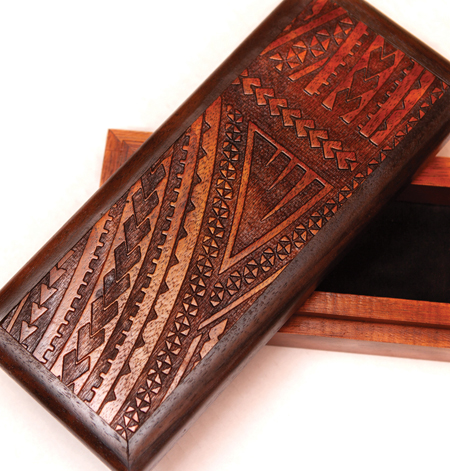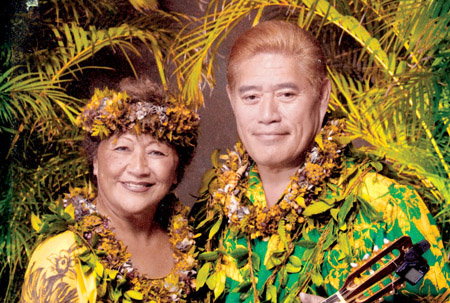
Stan Kaina: The Voice that Connected to the Aloha in Us All
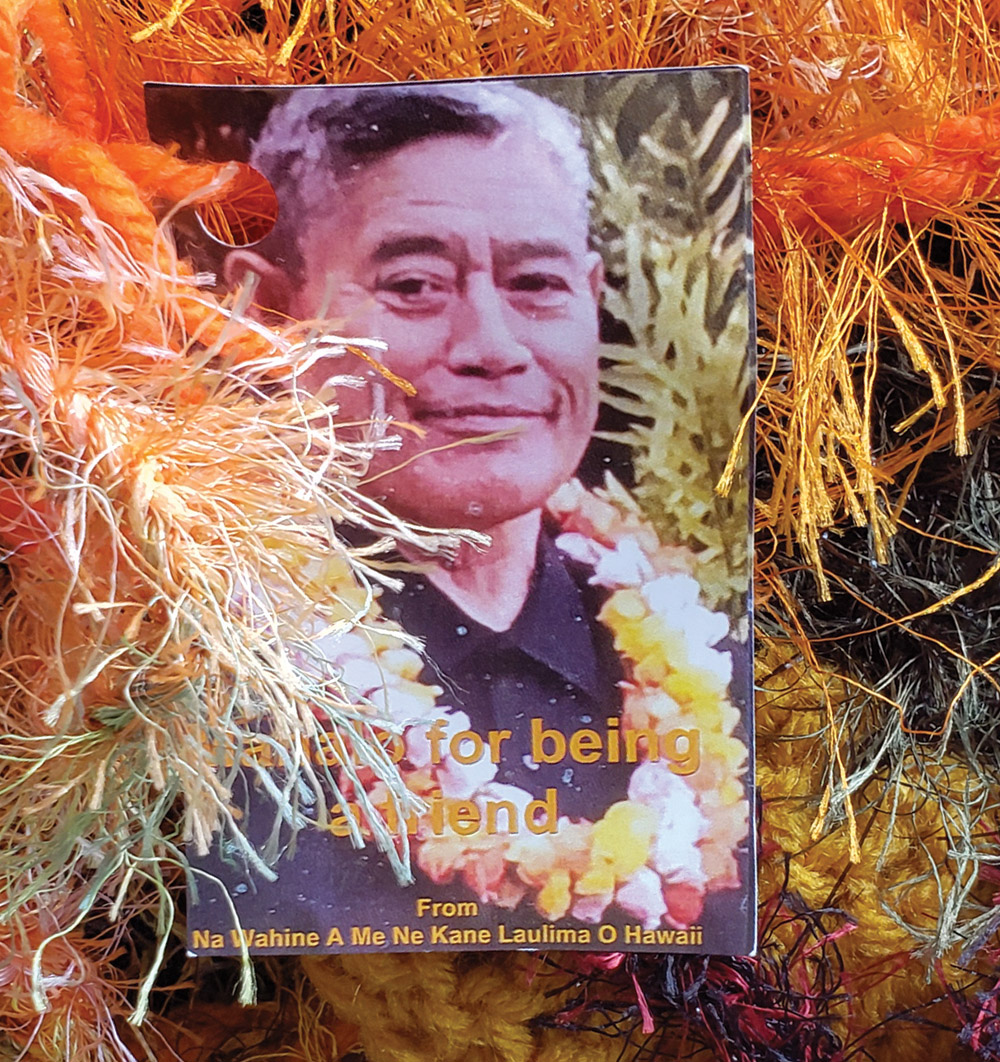
By Sara Stover
Hula dancer Pi‘ilani Rodrigues of Hilo passed by the enduring trees of Banyan Drive, their roots descending from thick branches towards the ground below. Heavenly music floated out of Uncle Billy’s Hilo Bay Hotel, carried into the night on a bay breeze. The date was March 6, 2004. That night, Pi‘ilani was not intending to dance. She was joining her friend Haunani Medeiros at Uncle Billy’s to enjoy some live music, nothing more.
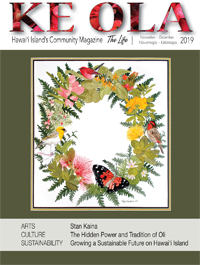
Until the kumu of Leo Nahenahe o Pohai Kealoha himself began to sing, seemingly to her. Stan Kaina always could connect with his audience, whether he was strumming his ‘ukulele at Hilo’s Palace Theater or collaborating with fellow musicians like Johnny Lum Ho.
If there was any doubt in Pi‘ilani’s mind about the actuality of that connection, it vanished when Stan set down his ‘ukulele, saying, “I’m not going to keep playing until you dance for me.” Although she was concerned about not being dressed to dance hula, there was something in Stan’s voice that was clear and beckoning.
“He drew the dance out of me,” says Pi‘ilani, Stan’s partner in life and in music. “I forgot about everything except the beauty and power of his singing.”
Not long after that, Pi‘ilani joined Leo Nahenahe o Pohai Kealoha, the talented group of performers and musicians that Stan led. The group’s Hawaiian name translates to “sweet gentle voices surrounded by love” and under the direction of Stan, they more than live up to their name.
From Maui to Merrie Monarch

Hailing from Maui, Stan was born with a head of red hair and a song in his heart. To be a native Hawaiian with red hair is rare, and may have given others the sense that here was a man who could transcend the differences that sometimes separate us.
This wasn’t the only thing that made Stan unique. He also possessed the gift of leo ki‘eki‘e, or Hawaiian falsetto singing. Embracing his dynamic gift, young Stan made his debut singing leo ki‘eki‘e on stage when he was 12 years old. Along with ‘ukulele and hula, leo ki‘eki‘e is regarded as an essential element of Hawaiian music and dance.
After moving to Hawai‘i Island in the 1980s, Stan continued to perform traditional leo ki‘eki‘e. He gained respect among other entertainers and collaborated with many renowned kumu hula and musicians, including Kawai Cockett and Paul Neves.
Stan performed with the gracious ladies of his hula hālau, Leo Nahenahe o Pohai Kealoha, at Hilo’s 19th Annual Big Island Hawaiian Music Festival in 2008, and at the East Hawai‘i Cultural Center as part of the Hawaiian Music Series during the illustrious Merrie Monarch Festival in 2009. As kumu of the hālau, Stan was expected to exemplify the qualities of artist, manager, and religious leader, which he did with humility.
Appearing at other major Hawaiian music events on Hawai‘i and neighboring islands, Stan gained a following among traditional Hawaiian music enthusiasts for his moving versions of “Mauna Kea,” “Kalapana,” and the especially beloved “Naupaka,” about the two varieties of naupaka flower, one growing near the sea and the other in the mountains. Each flower has what resembles half of a blossom. When the half-blossoms of each flower are joined, a complete yellowish-white flower is formed. “Naupaka” explains in song how lovers Princess Naupaka and Kaui the fisherman can be reunited when the flower of the ocean and the mountain flower are placed together.
A man of culture, and of a faith that transcended religion, Stan could seamlessly move from classic hymns to songs that embodied the storytelling that is the heart of Hawaiian music, frequently ending his performances with his rendition of “Majesty.”
Although it was his beautiful falsetto style that garnered him fame, it was his ability to connect that endeared “Uncle Stan” to Hawai‘i residents and visitors alike.
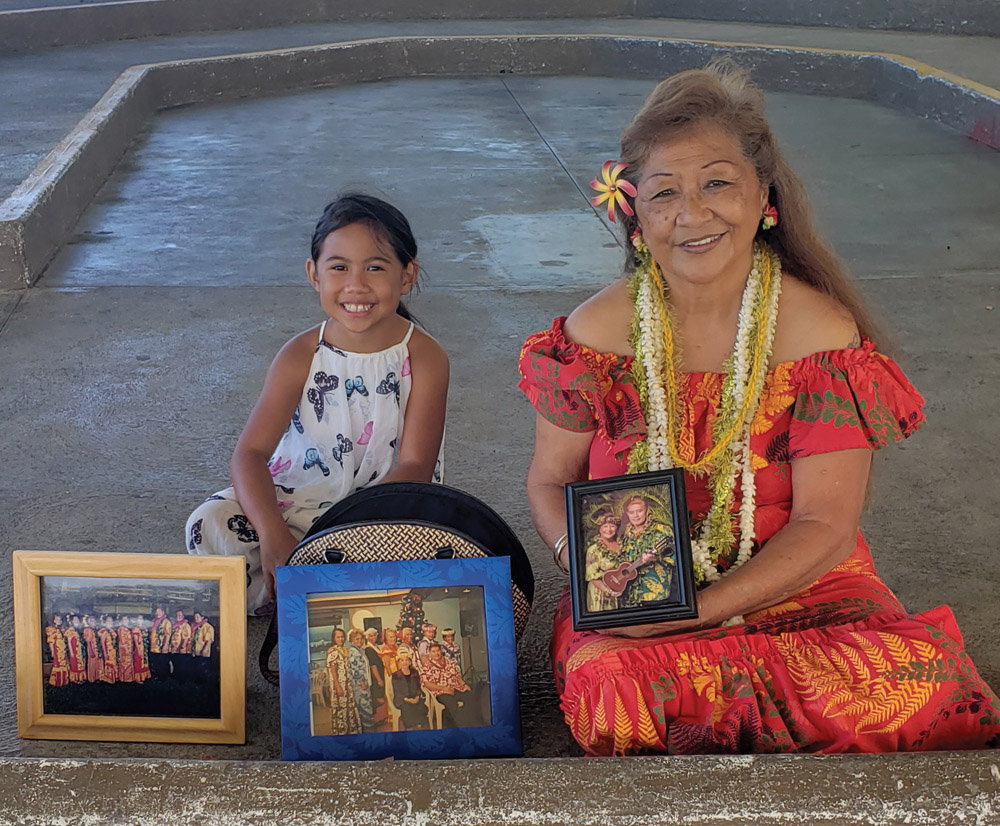
The Puka in Our Hearts
Creamy clouds the color of a naupaka flower hover over historic Mo‘oheau Bandstand, across from the Hilo Farmers’ Market. Blue sky peeks through, poking a puka (hole) in the clouds. A puka as big as the one left in the hearts of Stan’s hālau, Hawai‘i’s music community, and Destination Hilo’s Hula Tuesday supporters after his passing.
Whether playing with Leo Nahenahe o Pohai Kealoha or with the kūpuna (elders) from the Alu Like Ke Ola Pono No Nā Kūpuna program, Stan was a staple at Hula Tuesdays, entertaining regulars and visitors arriving on the cruise ships. His absence is almost tangible here in downtown Hilo, and the impression that Stan left is potent.
Stan was vital to the development of Hula Tuesdays, helping transform it from the idea of a weekly free performance to an experience that features talented local musicians and hula hālau like Leo Nahenahe o Pohai Kealoha and the Hula Sisters, providing a warm Hawaiian welcome to tourists and residents. Anyone who stops by the bandstand on Tuesdays also has the opportunity to learn hula basics and join cultural practitioner, Pi‘ilani, as she teaches the art of lei-making.
“Stan was involved in all of it, every Tuesday!” exclaims Pi‘ilani. “Singing, strumming the ‘ukulele. He even helped at the lei-making table!”
Leo Nahenahe o Pohai Kealoha has grown into what Stan envisioned when he named the group. Its members remain an ‘ohana of storytellers and musicians, with their sweet voices and hula as the vehicle for sharing those stories, and shining a light on values centered around Hawaiian traditions and culture. These gentle voices are still surrounded by the love Uncle Stan shared, and his presence is felt in every song.
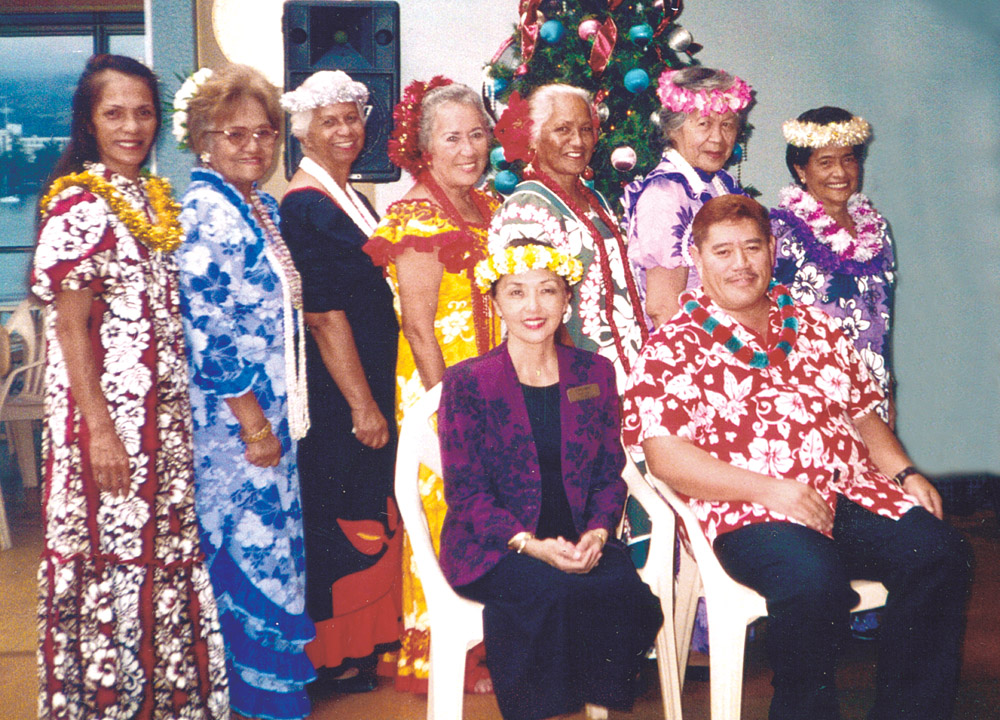
Music That Transcended Differences
“He ate, slept, and dreamt music. It was his life. Always!” says Pi‘ilani, explaining how Stan remembered old songs as one recalls an old friend.
“Stan had over 100 songbooks and he cherished the music in each one,” she continues. “Someone would hum the first few notes of a song, and Stan could tell you right away the songwriter and the original title.”
“Stan could read the audience, and I could read Stan,” emphasizes Pi‘ilani. “Stan was so upbeat and that’s how he performed. He would watch a crowd and just know how to infuse energy into them.”
You didn’t need to see that ever-present smile on Stan’s face when he sang to recognize his joy. You could close your eyes and still sense it, whether he was performing at a baby lū‘au or sharing the stage with music legend Aunty Genoa Keawe. Its source was Stan’s pure love for music and for Hawai‘i, and he found a way to share this love, undeterred by language barriers.
Pi‘ilani recounts an especially memorable moment in 2012 when visitors from Japan made up the majority of the audience at the Hilo Farmers’ Market, where Stan often performed live. “He sang a song in Japanese, dedicating it to Hawai‘iʻs Japanese kama‘āina and visitors.”
Stan was admired for his natural ability to entertain audiences. What moved him beyond cultural and religious differences, however, were his efforts to connect with others, from learning to sing in Filipino to performing at the iconic Tahiti Fête.
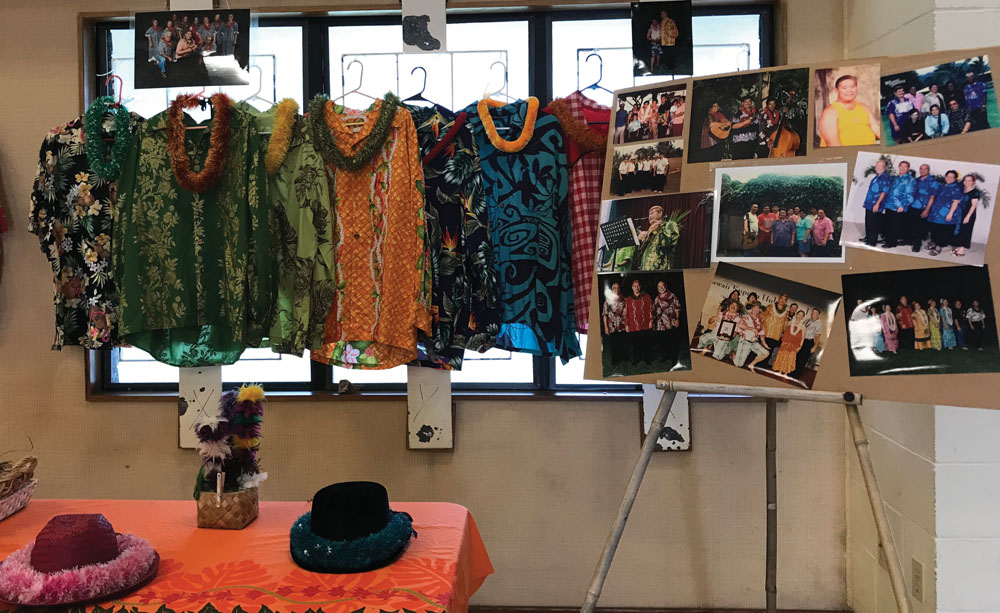
Aloha in All of Us
When he wasn’t performing, Stan was described as soft-spoken. Friends marvel at how someone so gentle could pick up his ‘ukulele and suddenly wake up the whole audience.
“Stan had the heart of a hero whose music transported you to another world,” notes Hula Tuesdays’ emcee and Stan’s friend Ku‘ehu Mauga. “His voice was truly his superpower!”
Stan’s motivation for entertaining was never fame or success. He was driven by his love for Hawai‘i, which prompted him to perform at a moment’s notice.
“No matter what was going on in his life, Stan was an entertainer and was ready to perform at the drop of a hat,” Pi‘ilani elaborates. “It didn’t matter if he was invited to sing in a church or at a family gathering.”
Although Stan and his accompanying performers and dancers spent a good deal of time entertaining the visiting cruise ships, or performing at Uncle Billy’s and across Hawai‘i Island, he was never too busy to show kindness to his Hilo ‘ohana.
“He would always call to check on me,” says 91-year-old Irene Midel of Hilo. “I will miss hearing him sing Bill Ali‘i loa Lincoln’s ‘Pua Be Still.ʻ And I will miss his beautiful voice and humble demeanor.”
“Aloha is connecting, and Uncle Stan’s voice was his vehicle,” says Ku‘ehu, of Stan’s ability to both sing about aloha and live it. “We all have aloha in us, and by sharing his music, Uncle Stan drew it out of us.”
Stan Kaina passed away on July 23, 2019. The message of his songs lives on in the hearts of the many he touched through his music: share your gift with the world and use it to connect with others. Aloha is connection, and it transcends all of our differences. ❖
Resources:
Smithsonian Folkways, Folkways.si.edu/na-leo-hawaii/music/article/smithsonian
